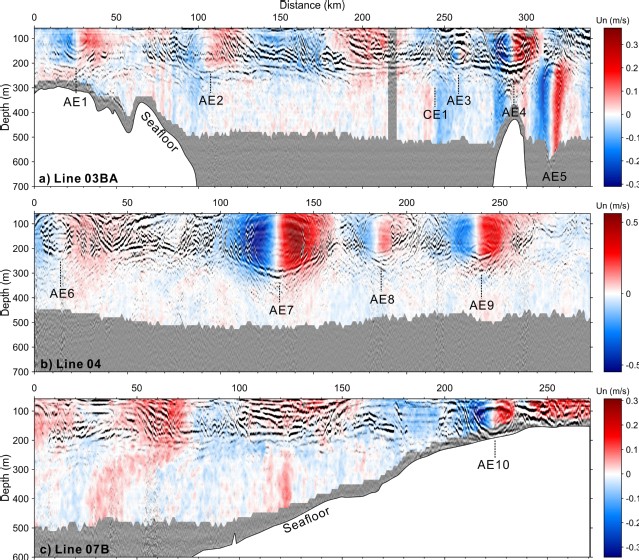Shun Yang1,2, Haibin Song1,2, *, Bernard Coakley3, Kun Zhang1,2
1School of Ocean and Earth Science, Tongji University, Shanghai, China
2State Key Laboratory of Marine Geology, Tongji University, Shanghai, China
3Geophysical Institute, University of Alaska Fairbanks, Fairbanks, AK, USA
Abstract
In recent years, the Arctic Ocean has experienced a dramatic decrease in sea ice cover, leading to enhanced turbulent mixing and eddy activity. Due to the scarcity of high-resolution observations, our understanding of turbulent mixing in the Arctic is incomplete. Using three seismic reflection transects with high spatial resolution (∼O (10) m) and concurrent ADCP-derived current velocity, this study identified 11 mesoscale eddies on the ice-free Chukchi Borderlands of the western Arctic Ocean. 82% of them are intra-halocline anticyclones. The total length of horizontal scales of these 11 eddies occupies ∼40% of the total length of three seismic lines. Diapycnal diffusivities estimated from seismic data were enhanced and can be up to 10−4 m2 s−1 at the edges of these eddies, compared with the average values (∼10−6 m2 s−1) at the Chukchi Borderlands. Seismic-estimated diffusivities were validated by fine-scale parameterization using ADCP-derived velocity data and historical hydrographic data. Enhanced diffusivities at the edges of eddies may be attributed to shear instabilities at the top and bottom edges and to submesoscale motions at the lateral edges of these eddies. We highlight the enhanced mixing at the edges of eddies in the halocline can increase the upward heat flux. This upward heat flux can transfer the heat of the warm Atlantic water below to the surface, which may further promote the melting of surface sea ice.
Full Article:http://doi.org/10.1029/2023JC019964



